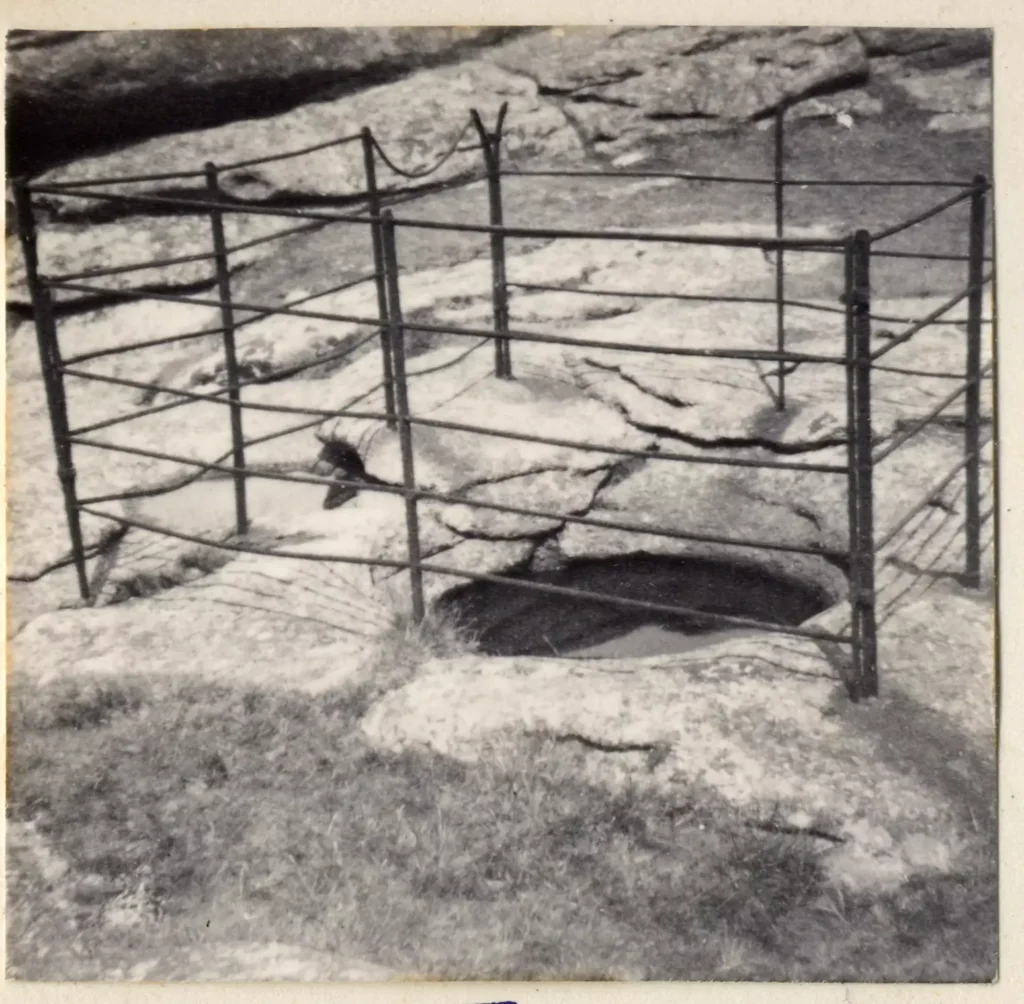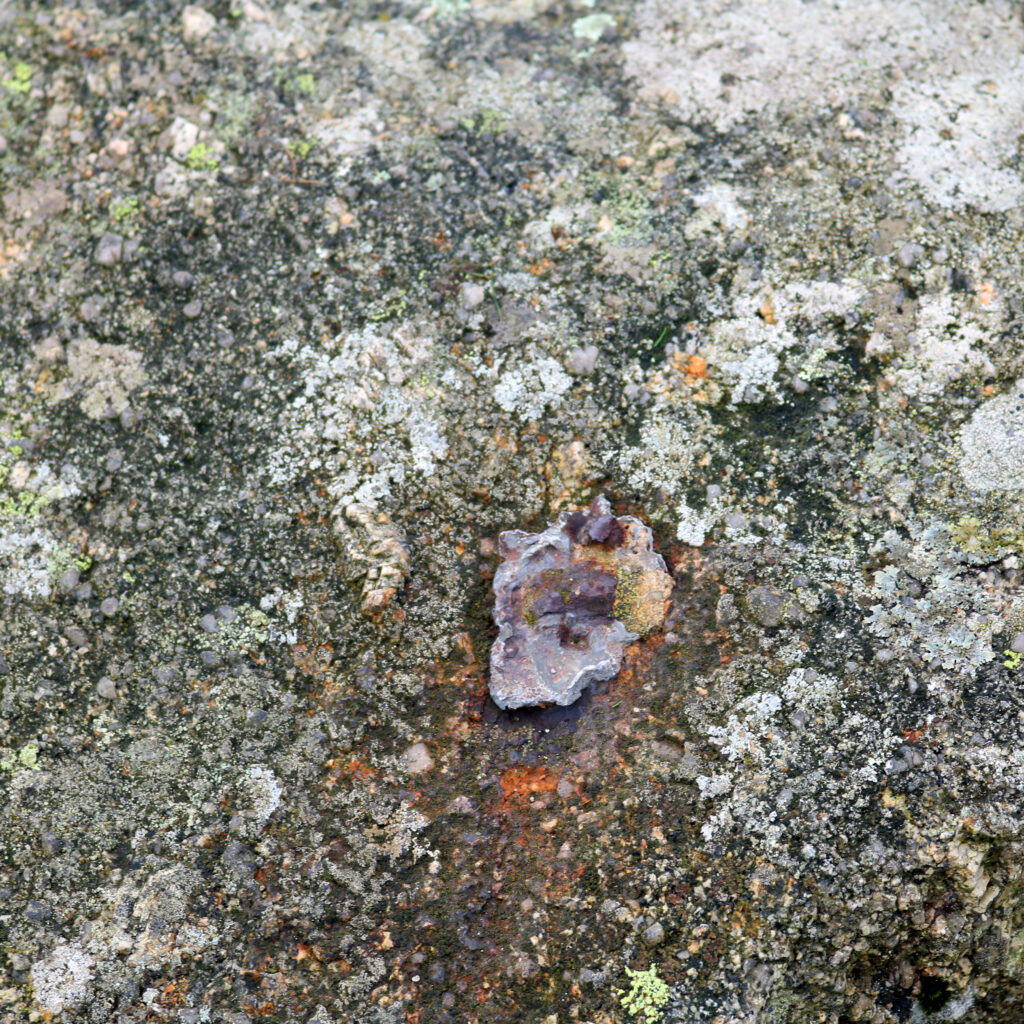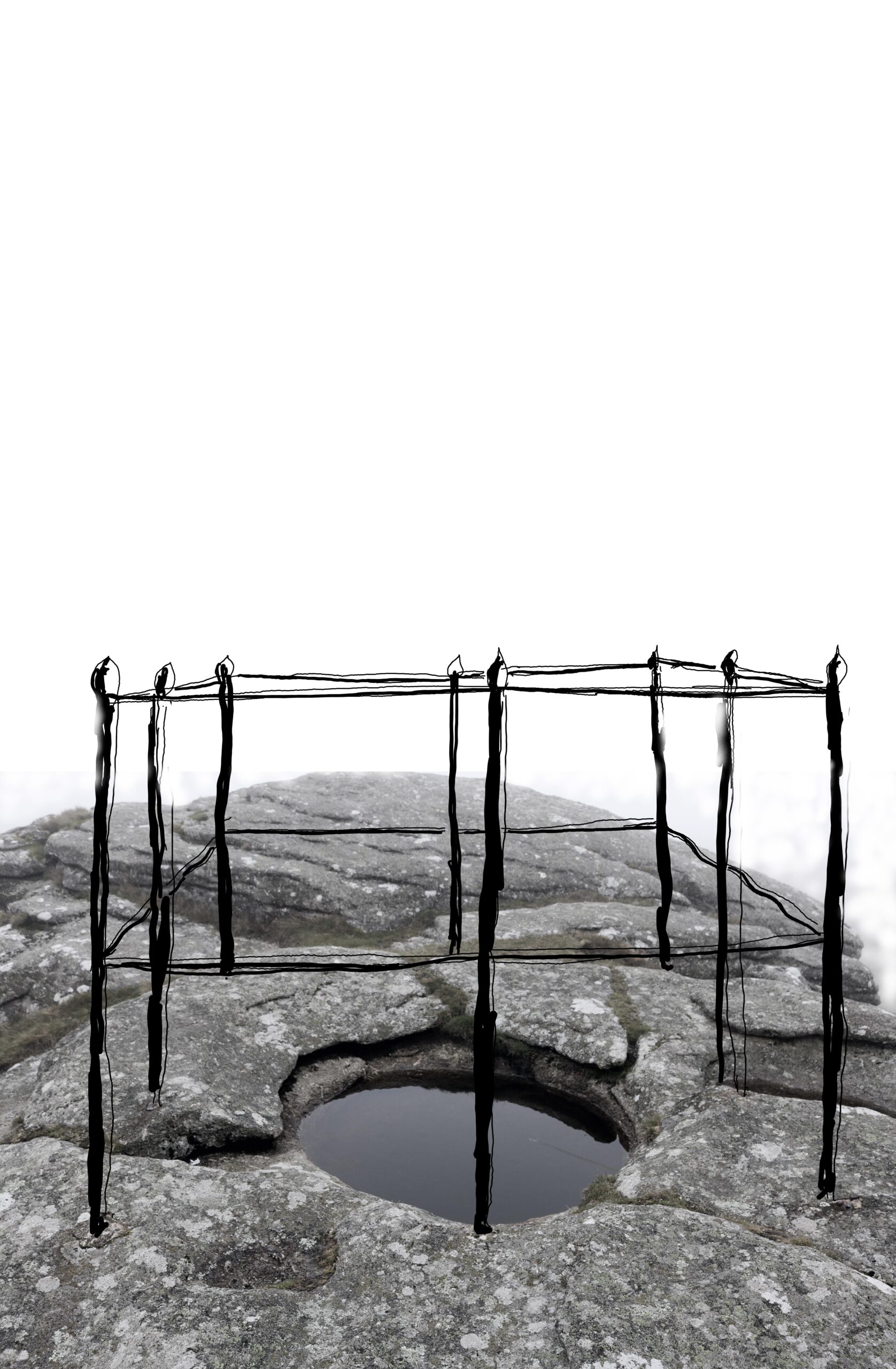“Like many other disputed points of antiquarian interest , where no contemporary authority or external evidence can be adduced on either side, the Rock Basins have afforded a fruitful source of controversy. Whilst some have strenuously advocated their claims to the venerable character of Druidical relics, “others at this doctrine rail” attribute their formation to the action of the weather, and to the facility with which the component particles of granite disintegrate under certain circumstances. That numberless hollows on granite masses have been thus naturally formed, no observer of the natural phenomena of Dartmoor will for a moment question. But that all these singular relics are to be ascribed to the action of physical causes, will scarcely be admitted by those who have examined such a curious specimen as that as the top of Great Mistor, one of the loftiest hills on the moor. This basin is in a singularly perfect state, in form a circle, three feet in diameter, and eight inches deep. Its sides are regularly formed, rising straight from the bottom, which is flat, a spout or lip is formed on its northern edge. It might be most characteristically described as a pan excavated in granite, (accordingly Mistor Pan is its popular designation), and bears such evident marks of artificial preparation as could scarcely fail to convince any unprejudiced observer.

That this rude and primitive species of basin formed part of the apparatus of Druidism there can be little doubt, but the specific purpose for which they were designed is not to clear. The frequent occurrence of Rock Basins on the surface of Logan Stones, induced Dr Borlase to conclude that they were intended to regulate the motion of the Logan Stone. The same author supposes them to have been used for libations of blood, wine, honey, or oil, and describes some as large enough to receive the head and part of the body. Fosbroke unhesitatingly pronounces Rock Basins to be “cavities cut in the surface of a rock, supposed for reservoirs, to preserve the rain or dew in its original purity, for the religious uses of the Druid.” Polwhele observes, “with respect to the use of these basins, I think we may easily conjecture that they were contrived by the Druids as receptacles of water, for the purpose of external purification by washing and sprinkling. The rites of water-lustration and ablution were too frequent among the Asiatics not to be known to the Druids, who resembled the eastern nations in all their religious ceremonies, fashions, and customs * From such basins the officiating Druid might sanctify the congregation with a more sacred lustration than usual. In this water he might mix his mistletoe, or infuse his oak leaves, for a medicinal or incantorial potion.”
We learn from Mr. Vernon Harcourt that the connection, or rather the identity of Druidism with Arkite worship, may be satisfactorily traced in this remarkable relic, of antiquity, the Rock Basin. In the opinion of the Druids, or of their predecessors in the Arkite priesthood, water was deemed so essential to the mysteries of regeneration, that they took great pains to secure a supply of it in the best way they could, and for this purpose they excavated basins upon the surface of the rocks in their high places to contain it. The same author notes a curious circumstance, related by an oriental traveller, “There are three large troughs or rock basins, neatly set out on the flat surface of a granite rock at Axum in Abyssinia: out of which, tradition says, that a great snake, the presiding genius of the flood, who resided in the hollow of the mountain, used to eat.**”
The following may be noted as characteristics of the rock basins observed in various parts of Dartmoor. Situation-commonly on the highest spot of the loftiest pile of the tor, very often near the edge of the block in which they are hollowed in many instances, with a lip or channel, to convey the water from the basin-bottom, flat, sides, perpendicular, depth, from four to eight inches, form, for the most part circular, and varying in diameter from one foot to three.”
*Rev Thomas Fosbroke, Encyclopaedia of Antiquities (1825), vol. 1, p. 75.

** “Earth spontaneously created other diverse forms of animal life. After the remaining moisture had warmed in the sun’s fire, the wet mud of the marshlands swelled with heat, and the fertile seeds of things, nourished by life-giving soil as if in a mother’s womb, grew, and in time acquired a nature. So, when the seven-mouthed Nile retreats from the drowned fields and returns to its former bed, and the fresh mud boils in the sun, farmers find many creatures as they turn the lumps of earth. Amongst them they see some just spawned, on the edge of life, some with incomplete bodies and number of limbs, and often in the same matter one part is alive and the other is raw earth. In fact when heat and moisture are mixed they conceive, and from these two things the whole of life originates. And though fire and water fight each other, heat and moisture create everything, and this discordant union is suitable for growth. So when the earth muddied from the recent flood glowed again heated by the deep heaven-sent light of the sun she produced innumerable species, partly remaking previous forms, partly creating new monsters. Indeed, though she would not have desired to, she then gave birth to you, great Python, covering so great an area of the mountain slopes, a snake not known before, a terror to the new race of men..” Ovid Metamorphoses Book 1

“Another small but distinctive geological feature of Dartmoor’s ice-sculpted granite is the humble rock basin, common on many tors. Rock basins are a product of periglacial activity during the more recent Ice Ages from the mid-Devensian glacial period (i.e. 71ka [71 thousand years ago]), after the granite tors had finally been exposed.
Large and weak feldspar crystals split during repeated freeze-thaw action. Fragments get blown away and reveal more material to weathering. When this weathering occurs on a level surface, a small recess is created which then fills with water and freezes. This fractures the rock around it so that on thawing, it too becomes fractured and is blown away. Gradually the freeze-thaw action creates a dish-like hollow that gets wider and deeper over thousands of years.
Although Kestor has the widest whole rock basin, Heltor Rock has an enormous remnant of one… It is over 4 m in diameter and over 2 m deep. The drainage channel has widened and deepened until the basin could no longer hold water. This basin must have formed over tens of thousands of years.”
Josephine M Collingwood, Geology of Dartmoor (2022), p 91
